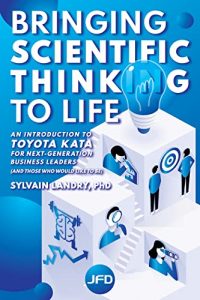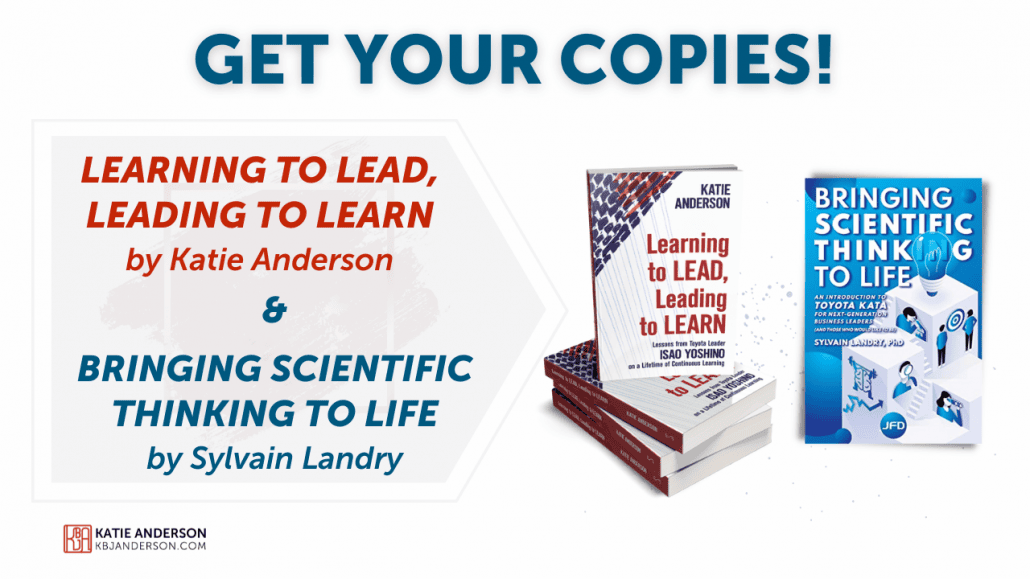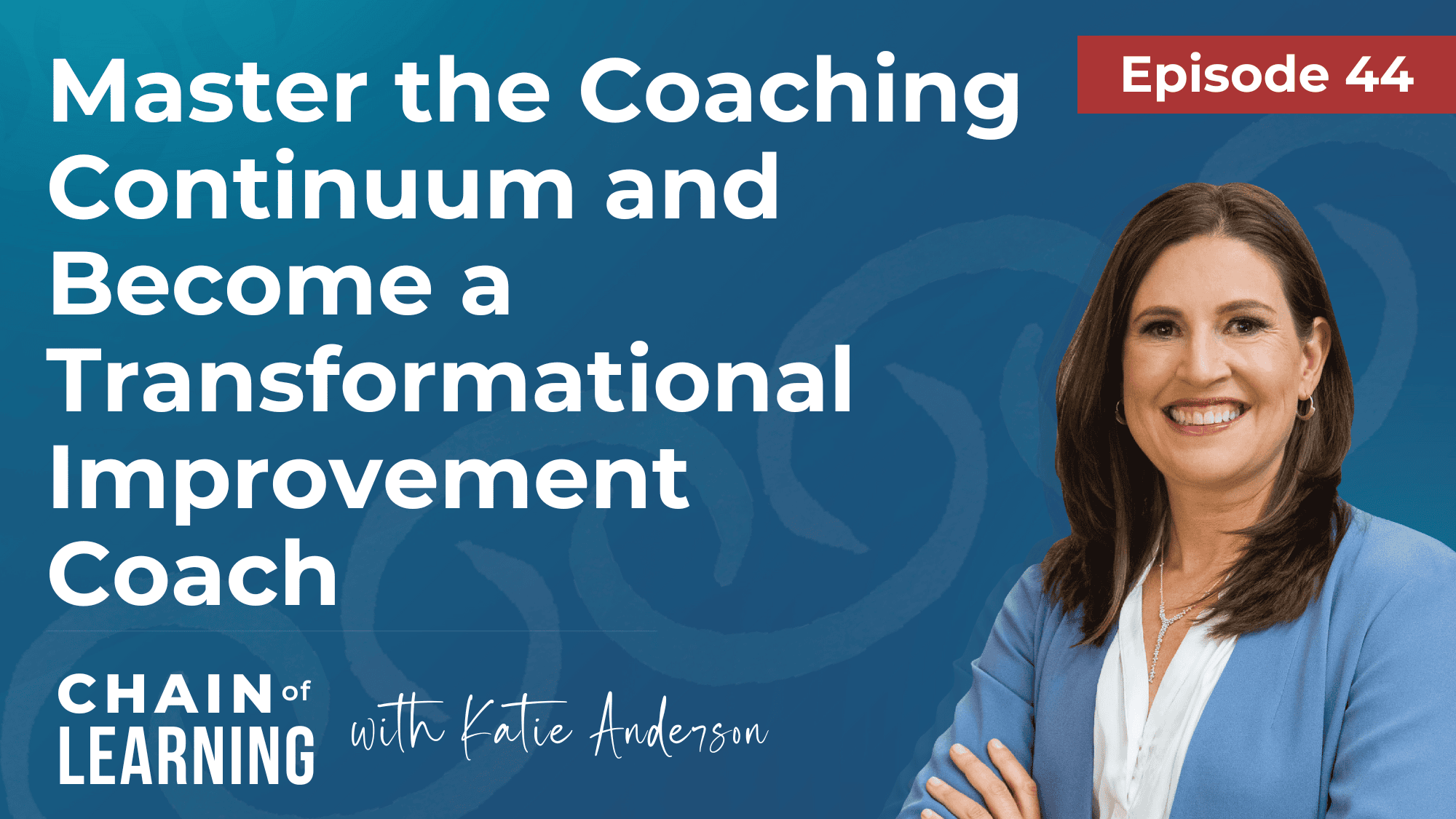How can you easily apply scientific thinking to everyday problems and strategic challenges? And how can you better coach others to think? How can you apply the Toyota Kata improvement and coaching practices in your organization?
I was excited to learn earlier this year that Sylvain Landry was releasing a book – titled Bringing Scientific Thinking to Life: An introduction to Toyota Kata for next-generation business leaders (and those who would like to be) – to answer these questions. I asked him if he would sit down to answer some questions about the book and the practices known as “Toyota Kata”.
We Did A Double Book Giveaway
Sylvain and I teamed up to give away a pair of signed copies of Bringing Scientific Thinking to Life and Learning to Lead, Leading to Learn to one lucky reader based in the United States or Canada.
And for those outside of the U.S. – I gave away three electronic copies of my other book, the Learning to Leading, Leading to Learn Workbook.
This giveaway has now ended but if you would like to be notified about future giveaways, then sign up here.
What is the “Toyota Kata”?
The Toyota Kata is a framework for scientific thinking and coaching for problem-solving developed by Mike Rother after years of research about how Toyota leaders really developed the capability of their people.
This is the same invisible pattern of practice that is the foundation for how I describe a leader’s role in my book Learning to Lead, Leading to Learn based on 40-year Toyota leader Isao Yoshino’s description of his role as a leader to:
- Set the direction
- Provide support (through coaching, asking questions, and creating conditions for learning)
- Developing themselves
I’ve written about my practices of Toyota Kata in some earlier blogs including Be a KATAlyst: Accelerate Learning by Leading with Intention and Kata: a practice routine for scientific thinking & reflection (a blog about practicing scientific thinking with my kids!).
About Sylvain Landry and Bringing Scientific Thinking to Life
Sylvain is an author, speaker, and professor at HEC Montréal University, a French-based business school, where he is currently the director of advice and support for continuous improvement. He is also deeply involved in the Kata practitioner community and will be hosting the KataCon9 (along with Beth Carrington) in 2023.
Sylvain and I first got to know each other in 2017 when he reached out to me after reading many of the articles I was writing based on my conversations with Toyota leader Isao Yoshino (which later became the foundation of Learning to Lead, Leading to Learn). We exchanged ideas about lean, learning organizations, and the patterns of leadership behavior that support continuous improvement.
Sylvain enjoyed the insights from my book so much that he not only used the book in his classroom, he has invited Mr. Yoshino to be an Adjunct Professor at HEC Montréal University!
We finally had a chance to meet in person at the Lean Frontier’s KataCon8 Summit in March 2022. (You can check out part of my keynote here in this post and video).
Unfortunately, I didn’t get a chance to get a photo together…but here are two pictures from the dinner we had together at KataCon8!
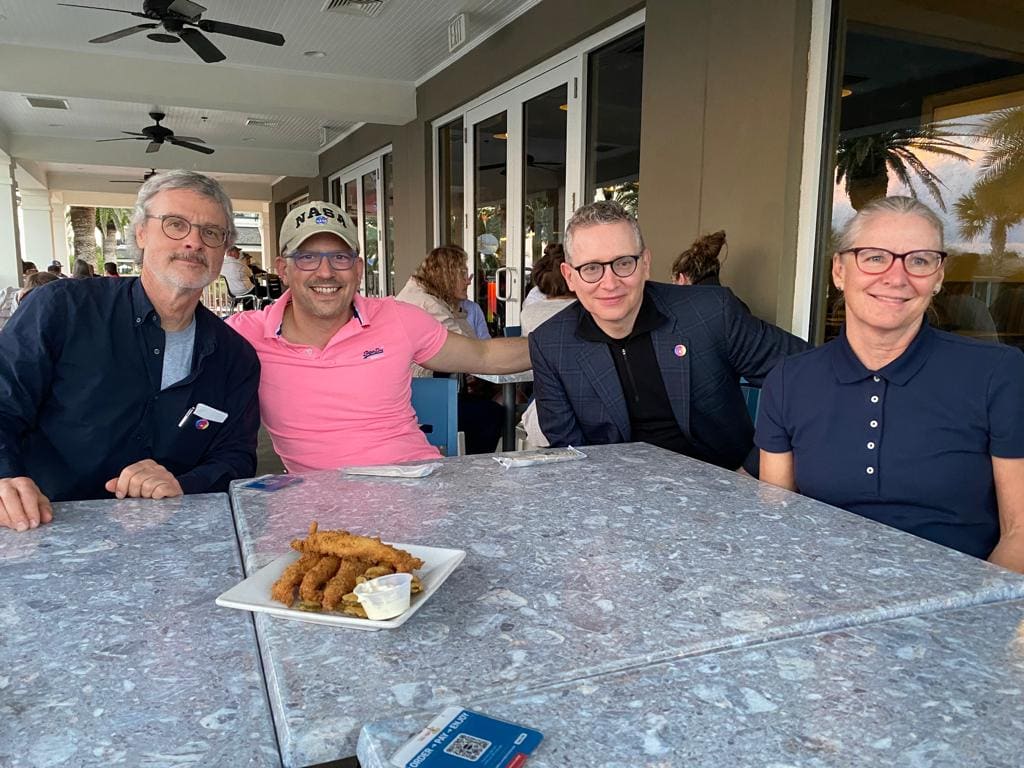
Here is Sylvain with Toyota Kata author Mike Rother, Kata Dojo creator Tilo Schwarz, and Kata coach Beth Carrington…and me with Kata coach Tracy Defoe.
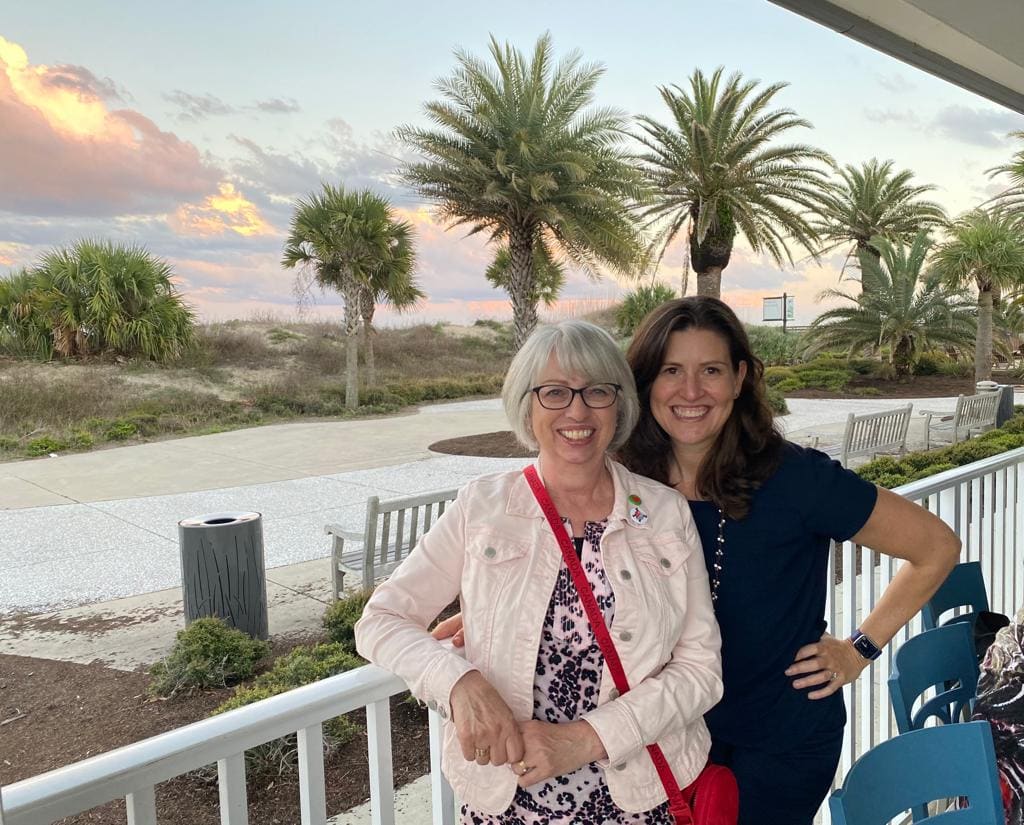
In Bringing Scientific Thinking to Life, Sylvain shows readers how to:
- Unlock your team’s ability to unlock the skill of scientific thinking.
- Implement a simple and proven approach to developing scientific thinking in any organization or team.
- Practice a style of management that enables each level of your organization to apply scientific ways of thinking and working, to achieve whatever goals you’re pursuing.
I’ve been looking forward to sharing this interview and Sylvain’s insights about the origins of his book and his own learnings along the way.
Author Interview with Sylvain Landry and Katie Anderson: Bringing Scientific Thinking to Life
Without further ado, read on to hear what Sylvain Landry has to say about his book Bringing Scientific Thinking to Life and the practices you can take to practice scientific thinking.
1. What inspired you to write this book? What problem or gap were you trying to close?
Good question! This book is a three-and-a-half-year journey that sprung from realizing we need a short introductory book about Toyota Kata for leaders and managers who aren’t ready for a detailed how-to book.
Bringing Scientific Thinking to Life fills a gap in the current catalog by providing a clear, practical discussion of “what is TK” as opposed to “how-to TK.” My imagined reader is a manager or senior leader flying from NY to LA, who reads the entire book in that time space.
So, Bringing Scientific Thinking to Life is a primer aimed at leaders, managers, supervisors and anyone curious about this growing practice of scientific thinking, continuous improvement and organizational adaptiveness. It’s a one-stop shopping for anyone who needs a quick and succinct overview of Toyota Kata – particularly its application practice –, in a fun and easy-to-read way.
2. You’ve brought Isao Yoshino, the subject of my book Learning to Lead, Leading to Learn, on as an Adjunct Professor at your university, HEC Montréal.
What is one thing you’ve learned from him – either directly or through my book – that enriched your understanding of Toyota’s approach to creating a learning organization or the fundamentals behind what is now known as the “Toyota Kata”?
On page 30 of Bringing Scientific Thinking to Life, I quote Mr. Yoshino saying: “If Toyota believes something is good, then Toyota does it thoroughly until it becomes a habit.” This is for sure one key element, and Chapter 8 addresses this point in detail.
Moreover, at Toyota employees are coached by their line managers, not staff members, at all levels of the organization. Something we’ve tended to miss in the Lean community is that it is the line leaders who play the key role in their teams’ development and success as opposed to delegating this task to HR, a Lean promotion department, or outside trainers as many companies do. These are elements to becoming a learning organization.
3. As with many tools and frameworks, people often get focused on the actual “template” or “strict structure”. What is the danger of “implementer” trap as it relates to the Toyota Kata, that you describe in your book?
Yes, the Lean community desperately needs to shift from an implementation mindset of certainty, to a more uncertain exploratory mindset characterized by experimentation. Of course, that’s harder than copy and paste. It takes more attention and reflection and adjusting as you go. But that’s normal for any scientific thinker!
The implementer error arises when we treat a Starter Kata practice routine – like the five Coaching Kata questions – as a method and permanently stick with its structured routine, rather than seeing it as a practice method and an initial step in a process of skill development. Over time, practice artifacts like the five-question card can evolve or play a lesser role as their pattern becomes inherent and you develop your own way by building on that pattern. This evolution may be difficult to understand at first for people who are used to being certain about solutions.
As emphasized by Jeff Liker quoted in my book: “Learning organizations evolve; they are not implemented.”
4. What do you suggest to help business leaders get started, and not see this pattern of coaching for improvement as a just “Toyota thing”?
Hah, Toyota Kata is specifically for organizations outside Toyota who lack the seasoned coaches Toyota has. That’s why it was developed and what it was developed for: to enable teams, departments and organizations to begin learning as quickly as possible by using small, structured “starter” practice routines.
My goal is to make people realize that we, as humans, carry out acts on a daily basis without always being aware of them. And that once we have understood and integrated new reflexes, our system becomes better suited to provide answers to all kinds of problems, at work and elsewhere.
So, Toyota Kata is a transferrable model to non-Toyota organizations of the kind of tacit managerial practices used in Toyota. What Toyota Kata proposes is scientific thinking as a shared mental model for humans.
5. What is a personal micro learning you have had about your own practice of applying scientific thinking or coaching in the kata model?
Learning how to navigate through what you, Katie, call the coaching continuum. There is a time to tell, to teach or to coach.
I have learned a lot over the last years. Yet, adopting the right posture at the right time, and seeing what my learner is ready for next is still a personal struggle. The coach’s job is quite difficult (but fun!), and the coach is learning as much as their mentee.
6. What is one thing that you discovered or learned with a new perspective through the process of writing the book?
The one thing I had missed or that I misunderstood in reading the original Toyota Kata book is Toyota and the Toyota Kata research view almost all of the lean tools not as solutions but as patterns of work to scientifically strive for over time. In other words, they’re like target conditions that help us discover what obstacles we need to work on as we try to get there. Many lean tools, or rather the patterns inherent in them, are desired destinations, not solutions in themselves.
Note that the difference between the visible and invisible purposes of these tools is very much the difference between the implementation mindset and a scientific mindset that strives to bridge the gap between a target condition and a current condition. The lean tools and techniques operate within the context of Toyota’s overall “Improvement Kata” routine which Mike Rother modeled in 2009. Our failure to see this perhaps explains some of the limited success we have had in trying to copy Toyota.
7. What is a question that you haven’t been, or are not usually, asked about the book? What is that question? And what’s your answer?
Given the multiple challenges of the 21st century, that question might be, “What is my role as a manager?”
With its increased complexity and dynamism, the 21st century is demanding more distributed leadership and experimentation, which in turn may be triggering a shift in management.
It’s a shift toward managers who understand and view their primary task as growing their team members’ scientific-thinking skills, to be applied to the organization’s goals and problems.
This kind of manager develops teamwork at eye level and a group culture that involves pointing in a direction, rather than the manager being the problem-solver and telling people what to do. It’s about coaching instead of directing, to develop leaders instead of followers. It’s amazing what your team can achieve!
Okay, but how can a manager (a) teach scientific thinking skills, and (b) learn how to coach those thinking skills? With the Starter Kata practice routines of the Improvement Kata and Coaching Kata!
I think we’re now in the process of figuring out what exactly the role of managers will be in the future. But we can already see some things, and I think you said it well in your book Learning to Lead, Leading to Learn: “The learner owns the thinking and doing. A leader owns creating the conditions for learning.”
If you would like to be notified about future giveaways, be sure to sign up here.


